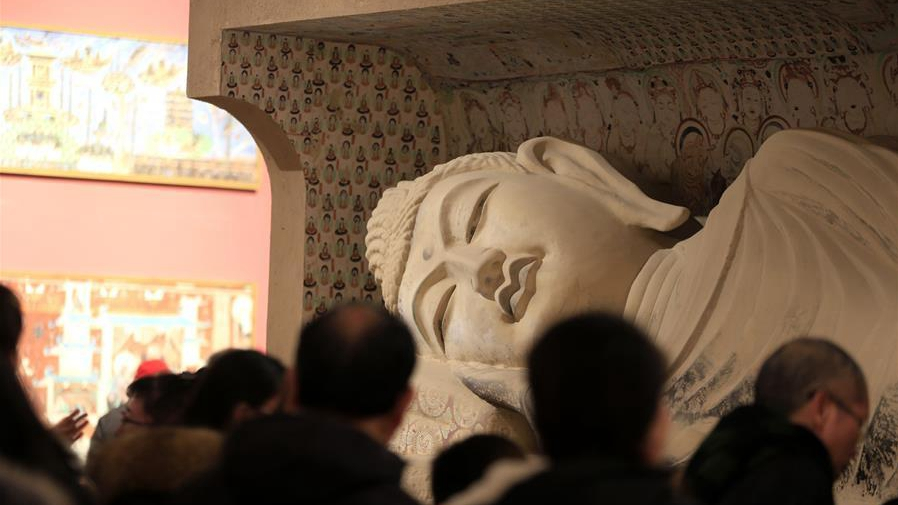
(Photo:CGTN)
A digital exhibition featuring Dunhuang cultural relics kicked off on Saturday, January 12 at Hebei Museum in Shijiazhuang, north China's Hebei province.
The exhibition, which runs until April 10 this year, features the famous Dunhuang caves, sculptures, and paintings, and presents them interactively via virtual reality.
Seven main sections are included in the exhibition: Replicas of the original caves, high fidelity paintings, painted sculptures rebuilt in 3D and restored artistically, live footage of real scenes from historical areas, multimedia shows and performances, stereoscopic presentations of layered paintings, and an interactive experience zone.
The exhibition's use of digital technology to replicate the relics creates exact copies and because the presentation of the replicas is not restricted by natural light and weather conditions, they can be even better to appreciate than the real ones.
The show also includes some exclusive parts that can't be seen at Dunhuang. No. 285 Mogao cave, for example, is not often open to the public, but can be seen here due to the digital replication.
Visitors can even interact with the show by wearing a VR headset, and be immersed into the caves without leaving Hebei.
"This exhibition marks the first time the digital achievements made by Dunhuang Academy China have come to Hebei province, and it's their debut at a provincial-level museum," said Wu Jian, the curator of this show and the director of Dunhuang Academy Heritage Digitization Institute.
"The cultural relics in Dunhuang are not movable. By using digital techniques, we processed a big amount of data, and made them into a well planned exhibition for the visitors in Hebei."
Dunhuang City is a pivot on the main routes of the ancient silk road, meaning it had profound implications on the cultural and trade exchanges between the East and the West during ancient times.
Its most famous Mogao Grottoes site has 735 caves, 45,000 square meters of wall paintings and more than 2,000 of painted sculptures.


